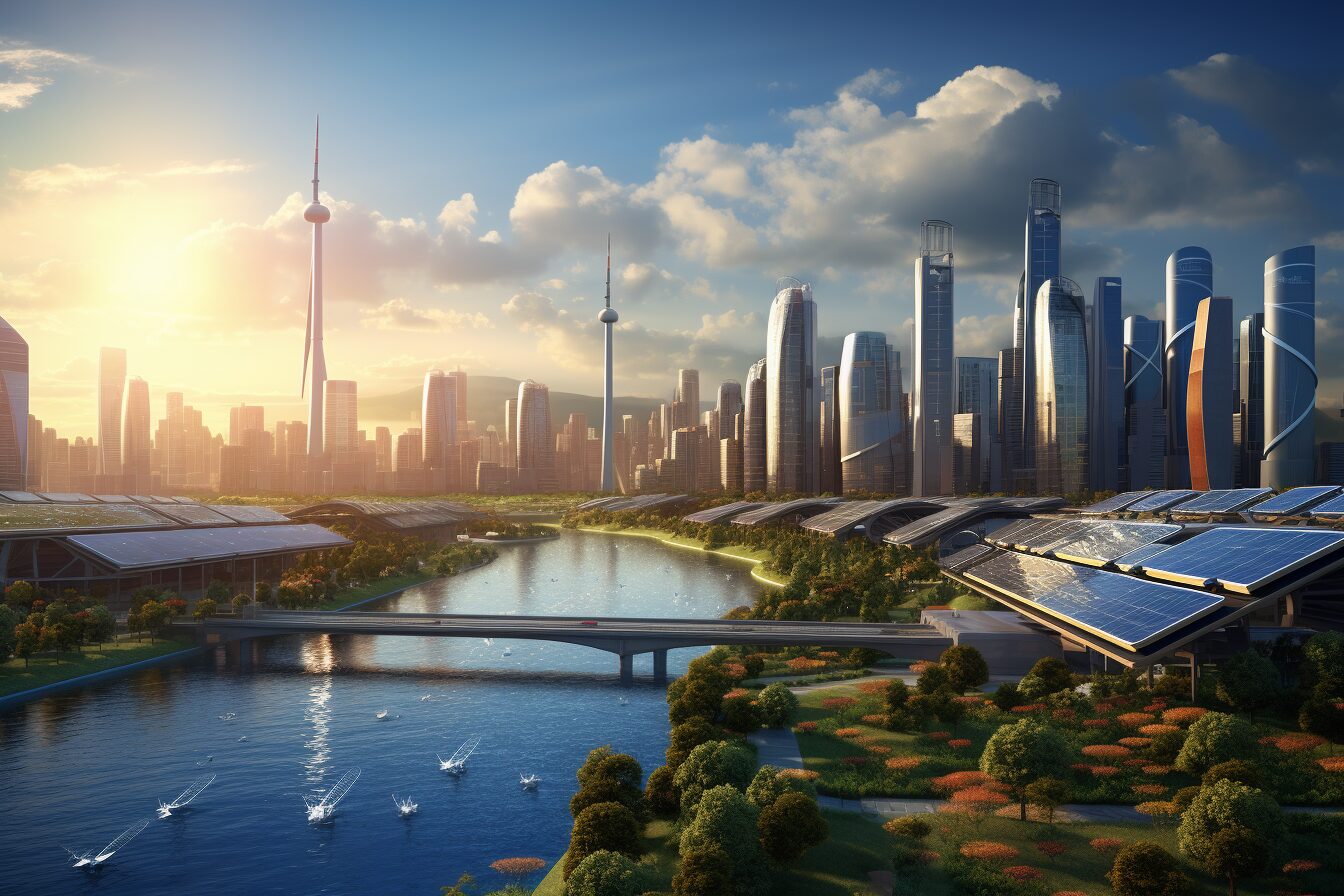
What Would a Zero-Waste City Look Like?
We are reader-supported. When you buy through links on our site, we may earn affiliate commission.
Scan nearly any urban landscape, and you’ll see at least a few pieces of litter cluttering the streets, even hanging over tree limbs like malignant holiday decorations. It’s not a pretty picture. It makes you wonder what would a zero-waste city look like? Is such a thing possible?
It is, with mindful planning and cooperation from all stakeholders — from residents to businesses to government. However, making a zero-waste city a reality takes work. Fortunately, it requires no more labor than people currently perform. It’s a matter of doing things differently and better.
While such a location has yet to exist in reality, some places have already implemented initiatives to meet this goal. What would a zero-waste city look like? Here’s a sneak preview.
What Is the Idea Behind Zero-Waste?
The first step to creating a zero-waste city is to agree upon a definition. According to multiple international governing agencies, it means conserving resources through responsible production and consumption and the reuse and recovery of products, packaging and materials. It does so without burning or creating discharges to the land, water or air that threatens ecosystems or human health.
1. Benefits of Zero-Waste Principles
The biggest benefit of zero-waste cities is preserving the quality of life for future generations. Science demonstrates that humans are inseparable from the environment, and the same conditions that help them thrive benefit other living organisms. In short, what’s healthy for the planet is also healthier for people.
People who live in clean environments that embrace zero-waste principles enjoy the following:
- Improved health outcomes: Air pollution causes millions of premature deaths annually. Furthermore, areas with ample green spaces — trees are necessary to keep carbon emissions in check — encourage people to exercise and spend time outdoors, bolstering physical and mental health.
- Cleaner homes: The stuff outside comes into your homes, impacting everything from your indoor air quality to how frequently you have to dust.
- Better views: Litter is unsightly, and smog dims scenic vistas.
- Happier, more peaceful communities: Improved mental and physical health makes everyone less irritable, preventing hostilities and conflicts.
Zero-waste principles also save money. For example, have you ever considered how much packaging adds to the cost of groceries? It takes money to produce those containers, and the added shipping weight also increases prices — why would anyone need to wrap an apple in single-use plastic, anyway?
2. How Does Zero-Waste Tie in With a Circular Economy?
For years, humans thought in linear terms, as growth as something that occurs along a straight, smooth line. However, advances in our understanding of the planet make it clear it’s time for a new mental model: a circle. This design imitates nature and her ongoing cycle of death and rebirth. As trees and plants reach the end of their useful life cycle, for example, they return to the soil, providing nutrients for the next generation.
A circular economy includes similar regenerative processes. It begins with keeping materials and products in circulation for as long as possible and then reusing them by recapturing their waste as a resource for creating new products and services. Growth is measured not by an increase in the number of materials produced but by improved quality and performance.
Zero-waste and a circular economy go hand in hand in creating a sustainable future where generation after generation of humans can share a healthy, living planet that marries modern convenience with conservation.
Resources Necessary for a Zero-Waste City
What are the necessary ingredients for a zero-waste city? Planners must establish the following five elements to bring the project to fruition.
1. Conscientious Production
Zero-waste begins with reducing unnecessary consumption, which means reframing production goals. Manufacturers must adhere to standards regarding the longevity, repairability and ultimate disposal of what they produce. Such guidelines may include:
- The use of sustainable materials in favor of those produced from fossil fuels
- “Right to Repair” laws that require manufacturers to provide parts and tools so consumers can fix their purchases at home
- Eco-friendly production practices that minimize emissions and runoff
2. Processing Facilities
Communities also need facilities to process waste. Landfills alone are unsustainable as they produce countless methane emissions, and many materials take hundreds of years to biodegrade. Necessary upgrades include:
- Improved recycling facilities capable of processing reusable materials
- Composting facilities to process organic waste, turning it into fertilizer for area farms
3. Collection Containers
One of the biggest hurdles planners face when creating a zero-waste city is providing proper disposal containers where people can put their trash. Currently, folks on road trips often find themselves hard-pressed to find anything but a standard garbage can. Public areas require sorting bins for recyclables and compostable, organic waste.
3. Transportation and Infrastructure
Zero-waste cities then need a team of individuals to collect the waste from containers and transport it to processing facilities. Fortunately, many municipalities have already switched to electric and hybrid vehicles that produce no emissions, easing air pollution.
4. Community Buy-in
A zero-waste city requires the participation of all. Individual consumers, for example, must learn how to separate their waste and what to avoid so they don’t accidentally contaminate loads, causing problems elsewhere in the waste-processing cycle. They’ll need to do so in the privacy of their homes, meaning they must first see the value to avoid compliance issues. Cities must educate their citizens about the benefits of following these principles.
Transitioning to a Zero-Waste City: A Blueprint
How does it look when people come together to create a zero-waste city? Let’s examine how other cities have begun the process so that other communities can study their models and adapt them to work in their region.
NYC’s 2030 Zero-Waste Initiative
The Big Apple is on track to become one of the greenest cities in America. Its OneNYC program strives to make the city zero-waste by 2030 and replace its reliance on fossil fuels by 2050. It contains various initiatives, many of which the city has already implemented, such as a plastic bag ban. It is expanding residential recycling education while adding new services like processing old electronics.
Washington D.C.’s Sustainable DC Initiative
DC’s self-imposed deadline for going zero-waste is 2032. They plan to divert 80% of landfill waste, reduce food waste by 60% and waste production by 15%. Current initiatives include a styrofoam ban that requires manufacturers to use compostable or recyclable containers. Paint manufacturers, likewise, are now responsible for collecting, recycling and properly disposing of waste.
As more and more regions establish similar initiatives, humans will learn to better manage their waste. Each new municipality adopting such programs encourages others to follow suit, and since you can’t localize pollution, each new town that goes green improves the planet as a whole.
What Would a Zero-Waste City Look Like?
Human beings currently create too much waste, piling up trash faster than Mother Nature’s ability to recycle it. Zero-waste cities seek to solve this problem by implementing initiatives that create more sustainable practices and treat garbage as a valuable resource.
Now that you know what a zero-waste city entails, you can push for similar initiatives in your town. Follow the example of cities that have such programs already and join the movement to create a greener planet for all humans to share.
Share on
Like what you read? Join other Environment.co readers!
Get the latest updates on our planet by subscribing to the Environment.co newsletter!
About the author
Rachel Lark
Rachel serves as the Assistant Editor of Environment.co. A true foodie and activist at heart, she loves covering topics ranging from veganism to off grid living.





